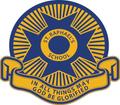Learning and Teaching

Mathematics
How quickly Term 1 has passed! It has been a joy watching and hearing students throughout the school engage in Maths, using hands on materials, utilising efficient mental and written strategies, setting goals and improving greatly in their testing. It has also been terrific to hear students engaging in Sunset Maths as an online learning tool to support their automatic recall of number processes.
Maths in the Home
There has been an abundance of literature analysing the importance of children developing their specific language skills in Maths. Everyday experiences like helping around the home, playing in the backyard or at the playground, and driving in the car, provide rich and meaningful contexts for students to develop these skills. Authentic experiences help students to develop a deeper understanding of Maths. Frequent exposure to mathematical terms and language - or 'maths talk' provides a strong foundation for future learning.
Examples of ways you can engage in 'Maths talk' -
- Using specific terms for items such as 'Can you please pass the 2 litre bottle of milk from the fridge?' or 'Can you please reach the one kilogram bag of flour from the pantry?'
- When cooking together, talk about the different measurements used and what they notice about each, e.g. teaspoon, tablespoon, millilitres, cups. Discuss ideas about being empty or full.
- As you walk, talk and play together, describe your child's movements out loud - a fun way to do this can be to create an obstacle course (great in the backyard!). 'Climb over the chair, slide between the trees, crawl under the table.' This 'maths talk' increases your child's spatial awareness and positional language.
- Notice and continue patterns in everyday life - for example, musical beats in their favourite song, coloured tiles on the floor. Safely using chalk on the driveway or footpath is a great way for children to create and continue patterns. Can they create a pattern (using numbers, symbols, colours, shapes or increasing/decreasing patterns)? If you create a pattern, can they identify some of the missing elements in the pattern?
**Adapted from the Department of Education and Training, 2018.
'Get Out of My House' game
'Get Out of my House,' a game developed by Michael Ymer, focuses on adding and subtracting numbers to and from 20 efficiently. The game can be played with students from Foundation to Year 6 - with a few adaptions along the way. I have included a game board for you to print if you wish, however this can be easily drawn up at home.
You will need:
Game board with the numbers 0-20 displayed in a grid
Dice: 6 sided dice and/or 10 sided dice
counters (7 each)
Each player has 7 counters of the same colour. Their partner has a different colour but also needs seven counters. Students take turns in rolling the two dice. They may add or subtract the numbers to make an answer (depending on their abilities). One of their seven counters is placed on the numbers.
The objective is to get all 7 counters on the game board before the other player (or for younger students, 3 counters). If a student lands on top of a number that has their partner’s counter on it they take their place and send their counter back to their partner. Students can have more than 1 counter of their own on the same number but if their opponent lands on that number all counters are sent back.
Possible Variations:
Add or subtract numbers to make an answer with the two dice
Use a ten sided dice
Use three dice
Allow any operation – addition, subtraction, multiplication and division
Simplify the game by using a 0-12 game board and only two six-sided dice
increase or decrease the required amount of counters (e.g. 3 counters in a row)
